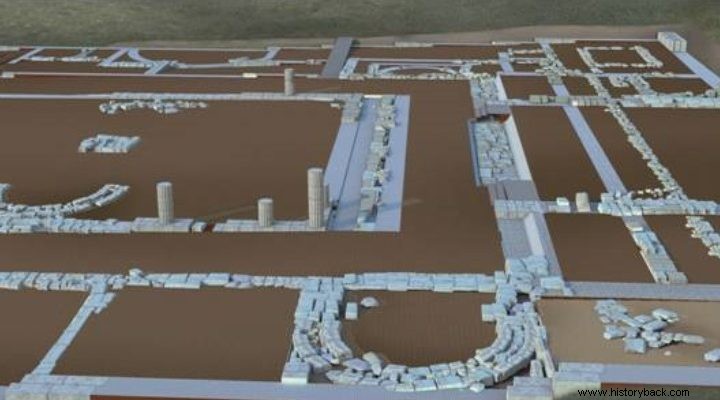
Next summer it is estimated that the palace where Alexander the Great was born in the then seaside Pella will be able to receive visitors. In this building, a part of which was excavated in 1957, when no one knew that it was the palace, the Macedonian king grew up, while in the palaestra located a short distance from the building, the heir played sports with the offspring of the aristocracy and in the huge swimming tank they exercised their body.
"The palace had a public character and in it was the room where the banquets were held, the throne room, if I may use this expression by analogy," explains the head of the Ephorate of Antiquities of Pella, Elizabeth Tsigaridas. She emphasizes that the work on the site is currently in full progress, with funding from the NSRF, and notes that the site will be able to be visited in the summer of 2021, if everything goes smoothly.
The visitor will see in front of him the floor plan of the palace, at foundation level, while the aim of the Ephorate of Antiquities is to present a digital tour of the visitor center which is expected to be built with a time horizon of 2023. There one will also be able to see the digital representation not not only of the palace where the Macedonian king was born but of the building complex which consisted of seven huge buildings, with internal courtyards, corridors, staircases and arcades that were connected to each other.
The building complex of the palaces reaches seventy acres
"The total area is around 70 acres. These dimensions can be understood if we take into account the fact that Pella was then the capital of the Macedonian Kingdom. The palace started out smaller, but was expanded after Alexander the Great's campaign. The period from 320 to 250 BC. it was a time of great prosperity for Macedonia, while the wealth of the palace was also known. We do not forget that throughout the third and second BC. century, Pella was the center of the Macedonian Kingdom, one of the most important states of the time," comments Ms. Tsigarida.
These were, after all, the reasons why the palace was plundered with rage by the Romans who, when the Macedonians were defeated in 168 BC. they came directly to Pella. As the head of the Ephorate of Antiquities reports, "the Romans did not destroy the city but looted the palace, where of course the treasures were also found. They even took the king and his family as slaves to Rome, showing off their triumph. The fortunes of the royal family were very hard while the palace was no longer used. However, the city continued to exist even during the Roman times, as Egnatia Odos passed through there, a road that connected the East with the West".
In the footsteps of the port of Pella
In the meantime, the archaeologists of the Ephorate of Antiquities are on the trail of the coastline of the port of Pella, where the Macedonians decided to move their new capital, leaving Aiges. And there may be no sea in Pella today, but the sources mention its coastal character. In the following years, the landscape changed in the area and due to the alluvium from the rivers that carried transported materials, the protected bay of Pella turned into a lagoon that later became the lake of Giannitsa and finally dried up.
"We worked for two years and at the same time we are conducting a surface investigation like a tax office. We archaeologists walk the entire area to see where we have a concentration of finds, islets and other clues that give us information. It is an inexpensive survey, but it provides us with valuable details. At the same time, we collaborate with specialist scientists who, with the necessary equipment, proceed with the geophysical analysis", comments Mrs. Tsigarida. With this method, as he points out, which has limited costs compared to excavation, the machines scan the ground and can detect the existence of buried antiquities and their location, without the need to expropriate large areas.
Archaeologists have already identified the coastline of the port of Pella and the islet of Fakos which was opposite it and had a wall. They are now trying to understand what was happening in the first years of the city's foundation at the beginning of the 5th century and the years in which it functioned as a port. For this specific function, the head of the Ephorate of Antiquities notes that the campaign of Alexander the Great may have started from the port of Amphipolis, but in the port of Pella many of the ships of the Macedonian fleet were built.
Most foreign embassies from other regions were also received there, while the role of the port in the commercial life of the city and the development of pottery for which Pella became very famous was also important. More information on the extent of seaside Pella, its urban fabric, wall and monuments is expected to emerge from the research program expected to start in early 2021.
APE-ME
